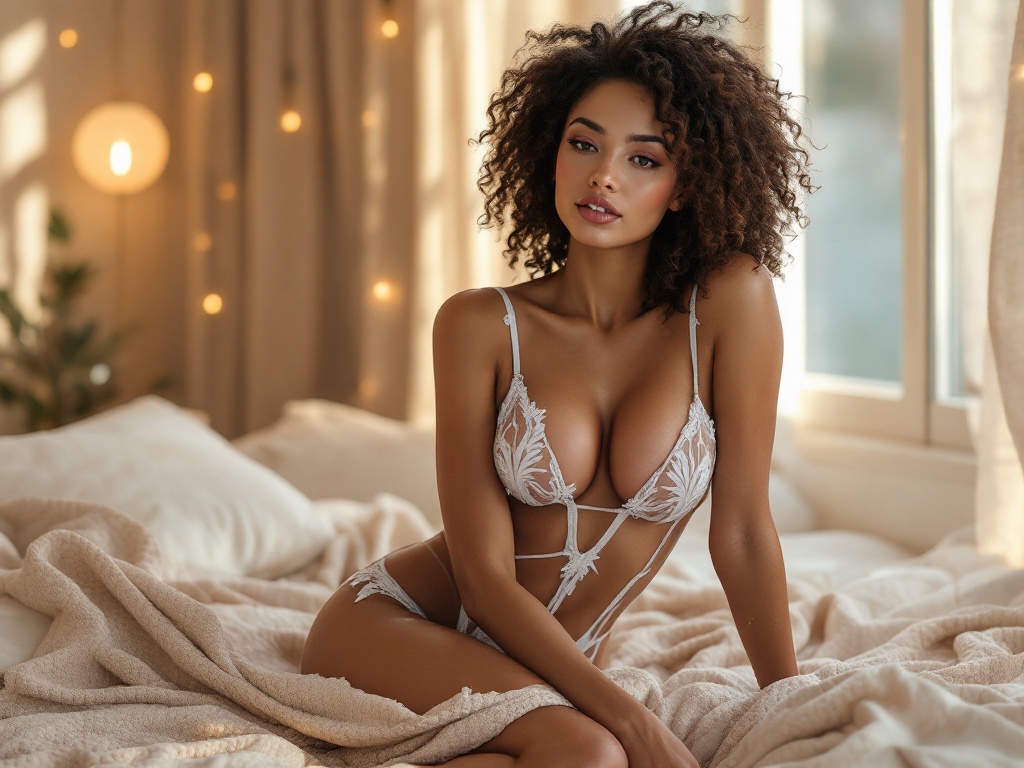The dialogue regarding AI-created erotic art stands as a modern intersection of groundbreaking innovation, artistic creativity, and ethical reflection. As technology progresses, the scope of artificial intelligence expands, enabling artists to delve into realms of expression previously unimagined. Nonetheless, this empowerment necessitates an immediate focus on pivotal ethical issues, particularly the principles of boundaries and consent. This discussion is not merely academic; it possesses tangible consequences for artists, audiences, and society at large. Engaging with these complex themes requires an appreciation of how AI can both enhance and complicate the dimensions of erotic art. As we embark on this exploration, we encourage you to ponder how such pressing inquiries will steer the future of artistic creativity.
Ethical Considerations in AI
Ethical AI goes beyond simply functioning correctly; it embodies values that safeguard human dignity while nurturing creativity. In artistic domains, moral frameworks act as crucial guides, ensuring that technology supports constructive uses instead of exploitative ones. The partnership between developers and creatives is vital for effectively implementing these ethical standards. Thoughtful attention to potential biases and moral dilemmas is especially important in sensitive areas such as erotic art when using AI.
Moreover, the emphasis on ethical AI shines a spotlight on the significance of transparency in the training processes of AI systems, including the origins of the data employed. The cornerstone of ethical AI lies in fostering fairness, accountability, and respect for individual rights, establishing its relevance and necessity in the realm of erotic art.
The Essence of Erotic Art
Throughout history, erotic art has acted as a reflective gauge of societal attitudes and norms regarding sexuality. From ancient cultures to contemporary expressions, erotic themes have consistently permeated visual art. The advent of digital media, particularly AI, has revolutionized the methods through which artists probe these subjects.
This transition marks a significant shift from traditional techniques to innovative representations that frequently challenge societal standards. However, traversing this expansive landscape raises vital questions about cultural portrayal and ethical ramifications. The influence of AI introduces an added depth of complexity, pushing the limits that artists once considered immutable.

The Significance of Consent in AI-Created Erotica
In this context, consent emerges as a fundamental principle crucial for maintaining the integrity of erotic art. It entails securing explicit approval from all individuals involved in the crafting and representation of such material. As artists harness AI to produce erotic visuals or narratives, the concept of consent can become ambiguous and intricate.
Controversies have arisen surrounding AI-generated content where the likenesses of individuals have been utilized without their explicit permission. As society navigates these ethical dilemmas, there is a pressing need to forge clearer definitions and practices regarding consent in AI-generated works. A noteworthy consideration is the potential for AI to enhance consent practices through innovative technology.
Negotiating Complex Boundaries
The boundaries between artistic expression and the commercialization of erotic art are undeniably dynamic. Artists frequently walk a precarious line, balancing creative liberty with ethical responsibility. This fragile equilibrium is further complicated by cultural sensibilities that influence how erotic art is received.
Key elements shaping these boundaries include:
- The historical context of erotic portrayals in art.
- Technological progress and availability.
- Public attitudes and acceptance of erotic themes.
These factors collectively feed into the ongoing conversation about what defines acceptable artistic expression within this genre. As this dialogue progresses, our comprehension of ethical standards in AI’s role in erotic art must evolve as well.
| Aspect | Implication |
|---|---|
| Creative Liberty | Enables a variety of expressions while invoking ethical questions. |
| Technological Advancements | Facilitates the creation of distinct works, yet poses challenges regarding consent. |
| Cultural Attitudes | Influences audience reception and impacts the legal facets of distribution. |
Audience Perspectives and Reception
The integration of AI in the field of erotic art has incited a spectrum of reactions from audiences. Various demographics, shaped by cultural backgrounds, age, and personal beliefs, generate a vivid array of responses to AI-produced content.

Community involvement plays a critical role in guiding the direction of future artistic endeavors. Added complexity arises from the stigma surrounding erotic art, which frequently colors public perceptions. Many regard this form of expression as taboo, stifling open dialogues and meaningful engagement. It’s vital to establish safe environments for conversation to encourage a deeper understanding of both the art and the technological frameworks that support it.
Some noteworthy audience considerations include:
- A readiness to embrace AI within artistic practices.
- Debates concerning the ethics of representation.
- Personal experiences shaping individual preferences and tastes.
Emerging Trends in Ethical AI and Erotic Art
As we look to the future, advancements in AI technology will undoubtedly broaden the horizons of erotic art. It is important to reflect on how these emerging trends will influence the discussion surrounding consent and ethical boundaries.
Potential trends that may steer these conversations include:
- The creation of AI-driven consent technologies.
- Heightened regulations surrounding AI-generated content.
- Collaborative initiatives between artists and technologists that emphasize ethical practices.
By cultivating collaboration within the industry, artists can address ethical challenges more adeptly, ensuring their creations respect boundaries and prioritize consent. This proactive stance will be essential in paving the way for a responsible and inclusive future in AI-produced erotic art.
Conclusion
To sum up, the amalgamation of ethical AI with erotic art calls for a thorough exploration of boundaries and consent. As AI technology evolves, our ethical frameworks must likewise progress, championing responsible creativity. The ongoing discourse on these crucial topics is indispensable, fostering a culture where consent is not merely a principle but a deeply embedded practice throughout content creation. Artistic exploration should persist, but with an intensified focus on ethics that honor the complexities of human experience. As we advance, let’s commit to scrutinizing these vital practices, nurturing a harmonious relationship between technology and artistry.
Frequently Asked Questions
- What is Ethical AI? Ethical AI encapsulates the principles and practices that ensure AI technologies function in a manner that is equitable, responsible, and aligned with human values.
- How does consent relate to AI-generated erotic art? Consent entails acquiring clear permission from all individuals involved, which becomes complex in AI-generated works where human creators may or may not be directly connected.
- What are the ethical ramifications of AI in erotic art? Ethical ramifications include risks of exploitation, objectification, and the misrepresentation of individuals’ identities and desires.
- How can artists ethically create AI-generated erotic content? Artists can adhere to ethical guidelines, engage with community standards, and maintain transparency about their methodologies, including data collection and usage.
- What future trends might we anticipate in this domain? Expected trends could involve stricter regulations on AI utilization, advancements in consent technologies, and an evolving dialogue concerning personal agency in digital art forms.
“


